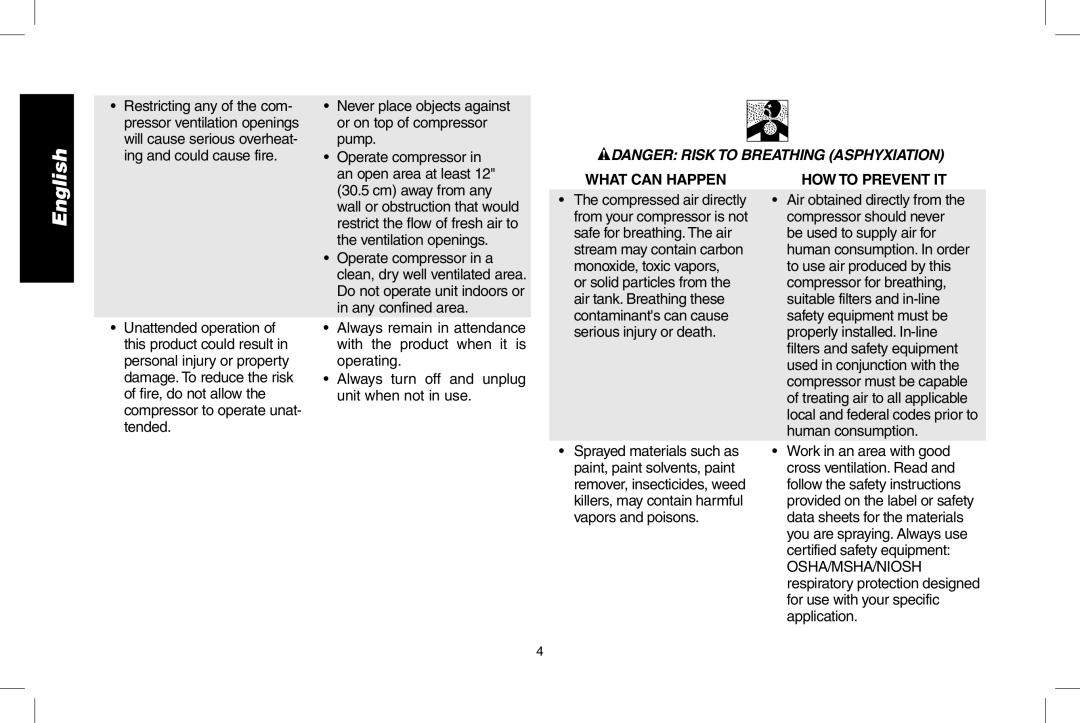
English
•Restricting any of the com- pressor ventilation openings will cause serious overheat- ing and could cause fire.
• | Never place objects against |
| or on top of compressor |
| pump. |
• | Operate compressor in |
| an open area at least 12" |
| (30.5 cm) away from any |
![]() DANGER: RISK TO BREATHING (ASPHYXIATION)
DANGER: RISK TO BREATHING (ASPHYXIATION)
WHAT CAN HAPPEN | HOW TO PREVENT IT |
•Unattended operation of this product could result in personal injury or property damage. To reduce the risk of fire, do not allow the compressor to operate unat- tended.
| wall or obstruction that would |
| restrict the flow of fresh air to |
| the ventilation openings. |
• | Operate compressor in a |
| clean, dry well ventilated area. |
| Do not operate unit indoors or |
| in any confined area. |
• | Always remain in attendance |
| with the product when it is |
| operating. |
• Always turn off and unplug | |
| unit when not in use. |
•The compressed air directly from your compressor is not safe for breathing. The air stream may contain carbon monoxide, toxic vapors,
or solid particles from the air tank. Breathing these contaminant's can cause serious injury or death.
•Sprayed materials such as paint, paint solvents, paint remover, insecticides, weed killers, may contain harmful vapors and poisons.
•Air obtained directly from the compressor should never be used to supply air for human consumption. In order to use air produced by this compressor for breathing, suitable filters and
•Work in an area with good cross ventilation. Read and follow the safety instructions provided on the label or safety data sheets for the materials you are spraying. Always use certified safety equipment:
OSHA/MSHA/NIOSH respiratory protection designed for use with your specific application.
4
